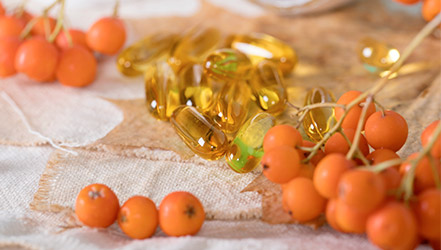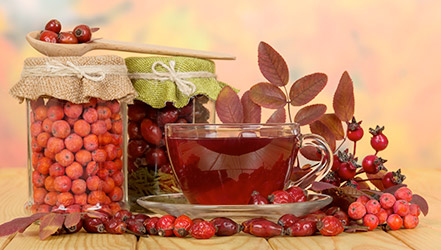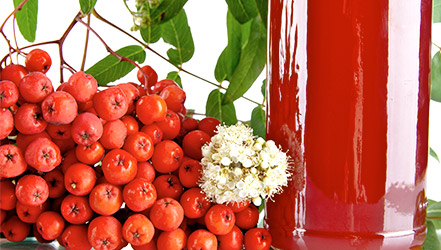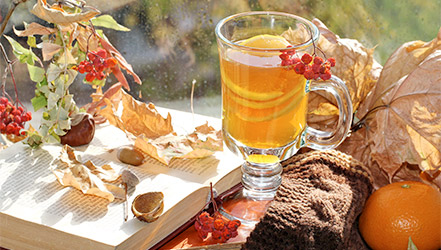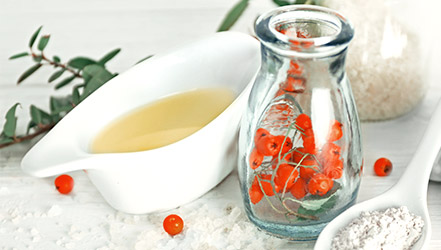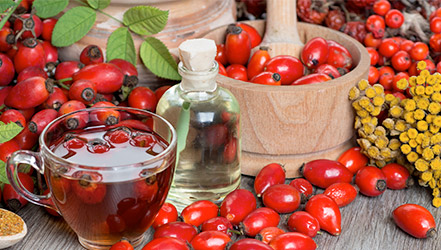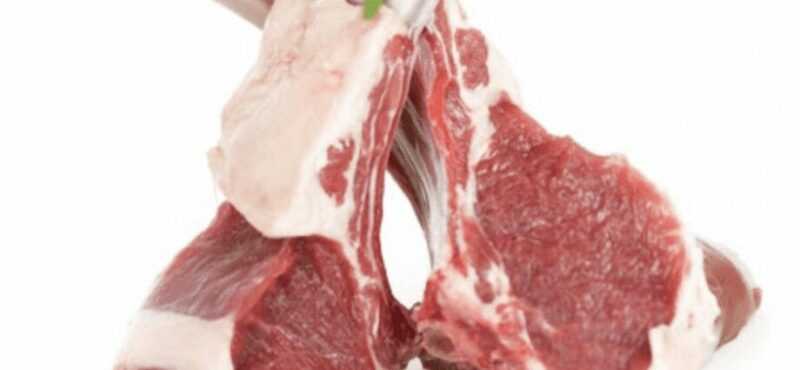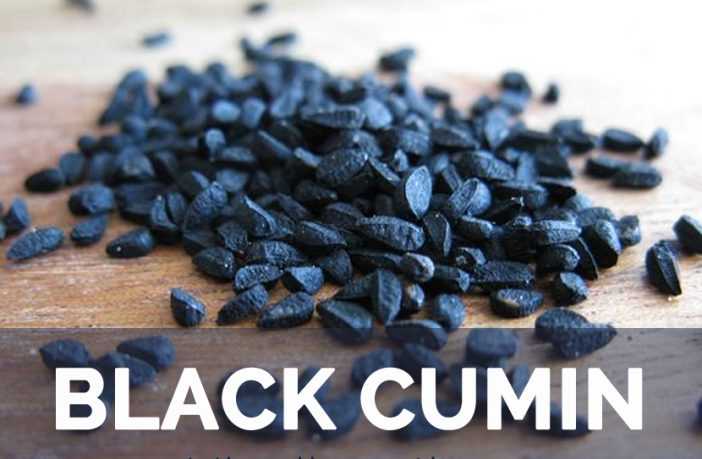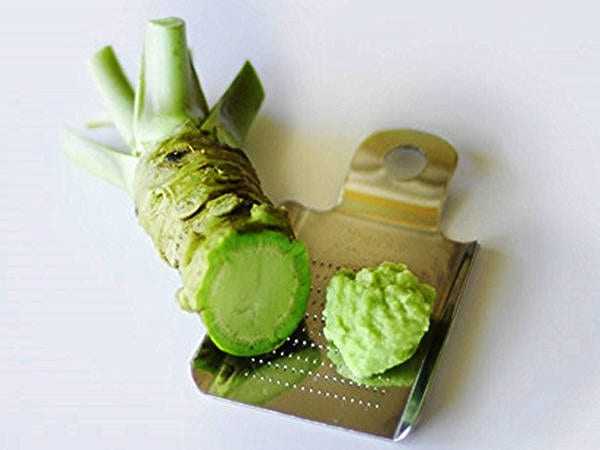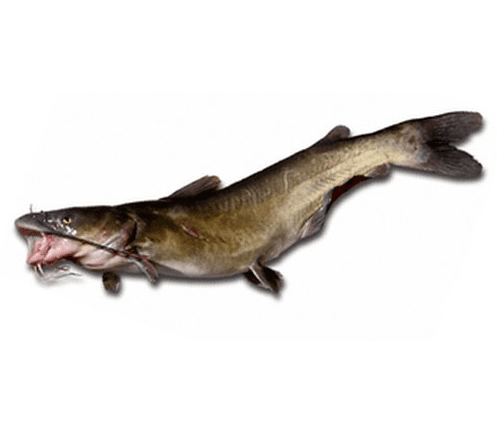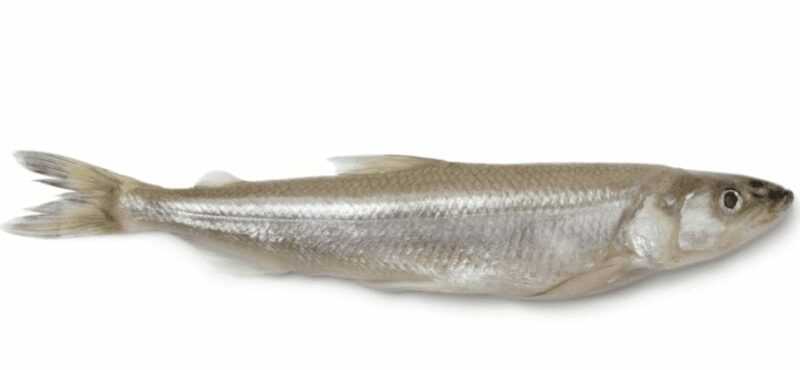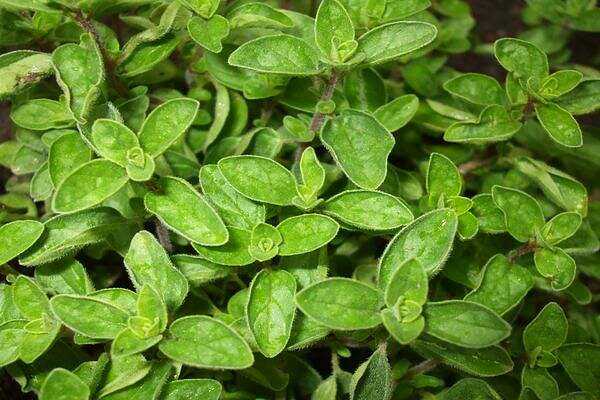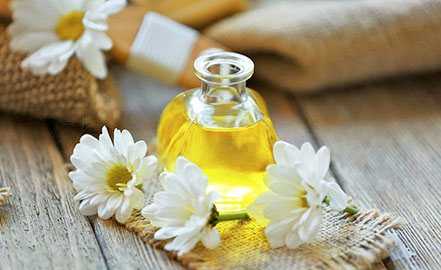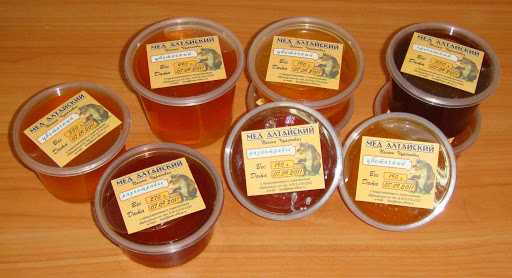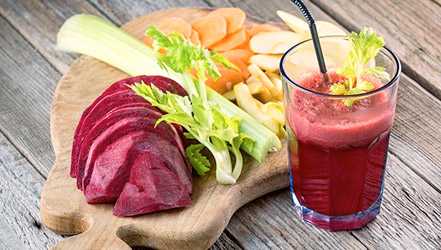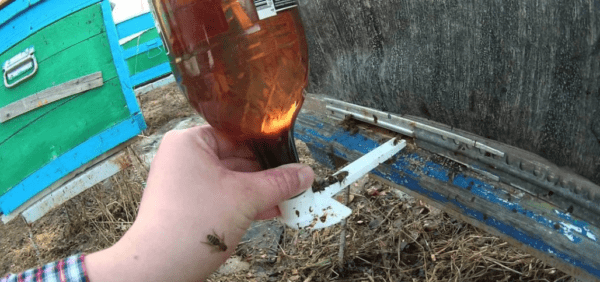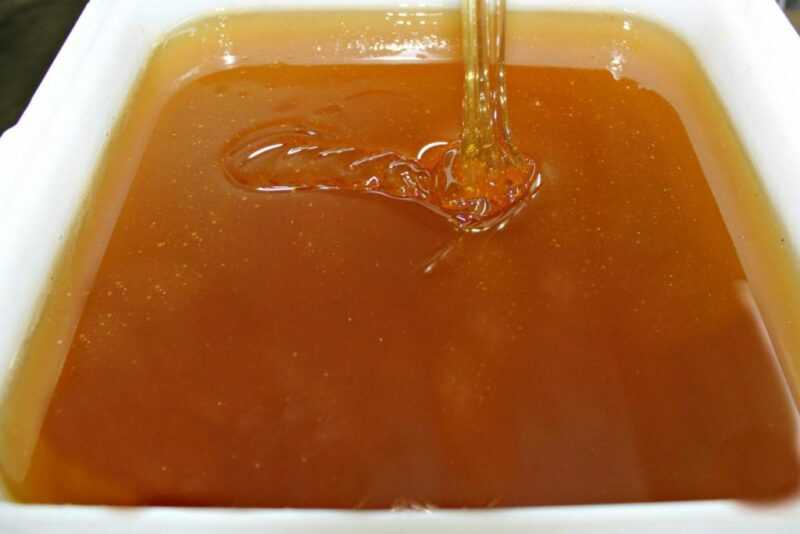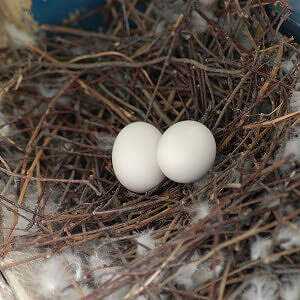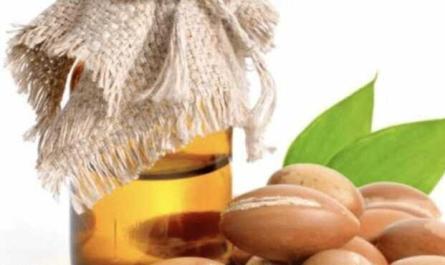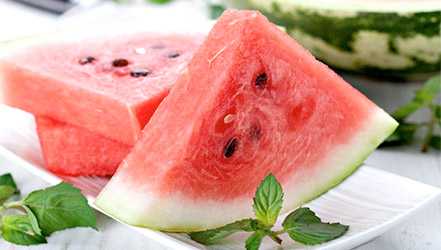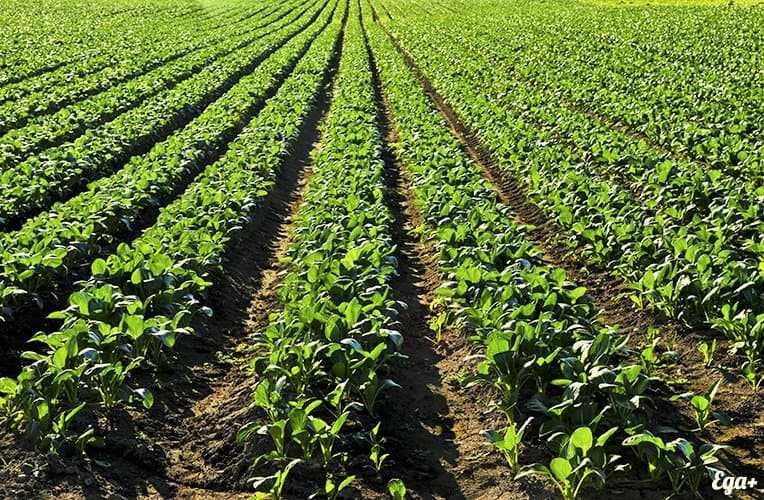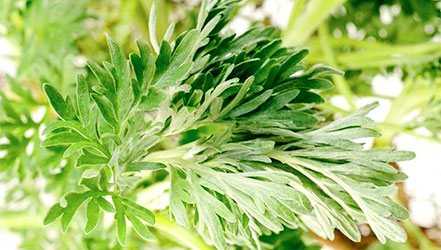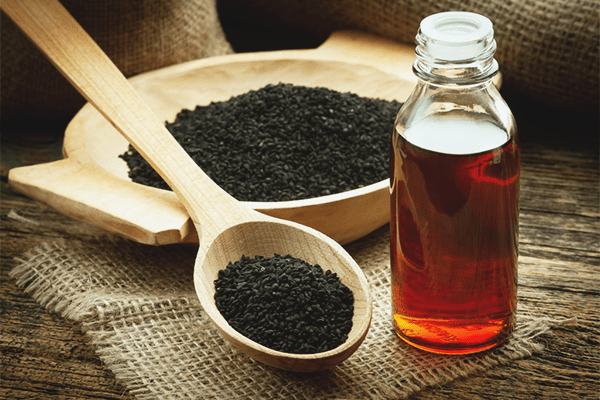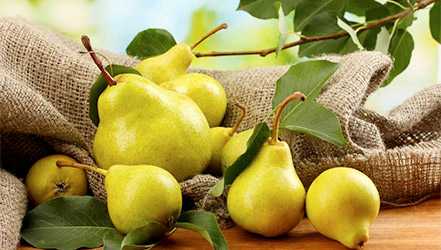Modern varietal mountain ash is devoid of the bitterness characteristic of wild-growing
plants, but still no less effectively helps to get rid of
high cholesterol, edema, low gastric acidity
juice and a number of other problems. It is actively used in traditional medicine.
and has scientifically proven medicinal properties.
Useful properties of mountain ash
Composition and calorie content
Fresh mountain ash contains (in 100 g):
Calories 50 Kcal
The chemical composition of mountain ash, as well as its yield or fruit size,
varies significantly in varieties and regions of growth. But
a wide vitamin and mineral complex is practically
for the entire “modern” mountain ash, since already at the beginning of the .th century
breeders could boast of notable success in breeding
resistant large-fruited varieties with a rich chemical composition
and improved flavor characteristics of berries.
The variety has retained its popularity to this day. Pomegranate,
which I. Michurin singled out among others. But also in recent history
have their own “champions”. For example, the variety Titanium considered
the most valuable in terms of anthocyanins
(up to 260 mg / 100 g). The same variety is among the best in terms of content.
ascorbic acid, carotene, catechins, but not in all parameters
he can be called the undisputed leader.
Distribution by the amount of the listed nutrients in different
popular varieties can be represented in the following list (from more
to the lower, in mg / 100 g, rounded to whole numbers):
- Ascorbic acid: Sorbinka – 141, Vefed – 95, Titanium – 67,
Dessert – 55, Ruby – 51. - Carotene: Sobrinka – 9, Titanium – 8, Dessert, Ruby and Vefed
– about 6. - Catechins: Titanium – 915, Dessert – 675, Ruby – 645, Vefed
– 360, Sorbinka – 290. .
In addition to ascorbic acid, a rich vitamin complex represented by
in rowan fruits, includes fat-soluble P, A, E, K, PP, vitamins
group B (in descending order: B3, B1, B2). Flavonoid content
(quercetin, isoquercetin, rutin, etc.), as well as free amino acids
(18 species, 8 of which are irreplaceable) mountain ash is ahead of most
fruit and berry crops.
Among the sugars in mountain ash, fructose is the most.
(up to 4-4,5%), glucose
(up to 3,5-4%) and “sugar” alcohol sorbitol (up to 25%). There are also
sorbic and parasorbic acids, macro- and microelements, essential
oil.
Useful substances are also found in other parts of the plant: in
seeds, leaves, bark. The seeds are characterized by an abundance of fatty
oils, but also includes a tainted glycoside
– amygdalin. Flavonoids, vitamin C are found in the leaves. Bark,
like many other plants, it is rich in tannins.
Medicinal properties
The medicinal properties of mountain ash are mainly associated with its ability
cause choleretic, laxative and diuretic effects, reduce
blood cholesterol levels, as well as provide a tonic
and a tonic effect on the body due to the presence of many
vitamins. A number of studies also noted hemostatic,
antimicrobial, antifungal, analgesic, anti-inflammatory
and antitumor effect (in varying degrees of severity).
Mountain ash amygdalin increases the degree of gastric acidity
juice, therefore, mountain ash is used with a reduced and is not recommended
with increased acidity. Also, this plant glucoside has
X-ray protective effect. In some animal experiments
he showed analgesic properties (when injected
intramuscularly). . Pektinы
as part of berries, they slow down gas formation in the digestive tract. Iodine in
flowers can help with diseases of the thyroid gland. Sorbitol
mountain ash is capable of causing a mild laxative effect. Rowan
phenols exhibit a pronounced antioxidant
activity. . But
in addition, antioxidant activity is found in fruits, inflorescences,
plant leaves. .
In recent years, studies have found other therapeutic
properties of mountain ash extracts:
- Rowan berry and leafy extracts have shown antimicrobial
activity against gram-negative microorganisms. therefore
researchers believe they can be seen as potential
a source of new antimicrobial agents specific to gram-negative
bacteria. . The emergence of such a plant alternative is important
also because it helps fight the resistance of bacteria to
antibiotics. - In an experiment on laboratory mice, the effect of saturated
anthocyanins of mountain ash berry extract for the development of such pathologies
as melanoma
B-16 and Lewis lung carcinoma. As a result, an antitumor
the activity of mountain ash extract and its ability to increase
antimetastatic activity of other anticancer drugs.
. Seriously studied
prospects for the use of rowan anthocyanins in complex therapy
experimental tumors. . - Discovered some antifungal properties of sorbic acid,
extracted from rowan berries. . These extracts are prepared from fresh
and dried berries by treatment with potassium hydroxide.
Today, in experimental programs, plant extracts are tried
treat kidney disease (glomerulonephritis). With the help of mountain ash
drugs reduce the body’s sensitivity to ionizing
radiation (when applied before and after the irradiation procedure). And biologically
active components of ripe mountain ash fruits – neutralize
the action of toxins.
It is assumed that people with diabetes mellitus
mountain ash sorbitol helps to safely “sweeten” the menu and become
an important source of vitamins C and P, which are important in the prevention
atherosclerosis, hemorrhagic diathesis, hypertension. Moreover,
the same sorbitol can help lower blood cholesterol levels
and fat in the liver.
Use in medicine
Official medicine as drugs mountain ash drugs systemically
does not use, however privately doctors may recommend
phytotherapeutic methods of treatment using mountain ash infusions,
decoctions, syrups. So, endocrinologists plant fees with mountain ash
sometimes prescribed as a means of normalizing glandular function
with hypo- and hyperthyroidism (conditions of the thyroid gland with insufficient
or excessive production of triiodothyronine and thyroxine), with thyrotoxicosis
(excess hormones).
On sale there are both dry packaged berries and biologically
active liquids (from different manufacturers). Similar liquids
are considered an effective vasoconstrictor capable of
in addition, to activate the coronary circulation. But in general
manufacturers do not reduce the effect of the drug to any specific
influence on the body, listing in the description the entire list of therapeutic
the properties of mountain ash, described primarily in folk medicine.
For example, whole rowan berries (together with crushed rose hips)
included in the “Vitamin collection No. 2”, which refers to
multivitamin preparations of herbal origin. It is intended
for:
- regulation and normalization of metabolic processes and carbohydrate
exchange, - reducing the degree of vascular permeability,
- activation of tissue repair,
- enhancing the synthesis of hormones,
- moderate stimulation of the secretion of the glands of the digestive system,
urine and bile secretion.
According to the instructions given, the product should be used
to recover from colds and infections
diseases, with vitamin deficiency
of different nature and in the course of complex therapy with a lack of vitamins
C, A, P, K. Take the collection in the form of an infusion, the recipe for which is also
widely used in folk medicine.
In addition, work is underway to create drugs based on mountain ash
berries, and some of these projects are progressing very successfully.
In particular, Russian scientists have developed a manufacturing technology
original dosage form – dermatological ointment containing
vitamins A, E, phytocomplex of rowan berries. Were held
biopharmaceutical studies of the optimal composition of the ointment in tests
in vitro (“in vitro”), a hardware-technological
scheme for obtaining an ointment based on a lipophilic complex. results
microbiological and pharmacological studies of lipophilic
complex and ointments have demonstrated their strong antimicrobial
and anti-inflammatory action. .
In folk medicine
Use mountain ash fruits as a folk remedy in Europe
started in antiquity. First the ancient Greeks, and after them
and the Romans, ate berries to strengthen the stomach, stop nausea
and vomiting, slowing down intoxication during a feast. And not even
prevent gastrointestinal upset, rowan bunches
prophylactically used to purify drinking water. It was believed
that a branch of a plant thrown into a jug will keep the water fresh longer
and will provide it with a pleasant taste.
Gradually, the range of applications of mountain ash in traditional medicine began
expand, including through the exchange of therapeutic practices
between nations. Until now, in national herbalists you can find
traces of ancient medicinal traditions of the use of mountain ash:
- in Austria and Hungary, plants treat dysentery with berries,
- in Poland – kidney disease and diabetes,
- in Bulgaria and Eastern Europe – rheumatism,
kidney stones, diarrhea, gynecological diseases,
nervous disorders - in Turkey – the leaves of Rowan home (Crimean) are used
for the treatment of burns,
cough, abdominal pain, kidney stones, and fetuses – with diarrhea, - in Scandinavian countries – dropsy, open wounds, fractures (in
as a poultice), - in Estonian ethnomedical texts, mountain ash is mentioned among
natural anti-cancer agents . etc.
In general, in modern traditional medicine, various
the healing properties of mountain ash, but, first of all, urine, bile
and diaphoretic, laxative and hemostatic. Consequently
– with the help of homemade mountain ash preparations, they eliminate rheumatic
and gout
pain, restore the digestive tract, reduce pressure.
In addition, mountain ash preparations due to its rich vitamin
the composition is recommended for colds,
due to the vaso-strengthening effect – with atherosclerosis
and heart disease, due to the presence of sorbic acid –
with microbial and fungal infections. Dying practices can be
include the use of mountain ash as a contraceptive.
Therapy in all of these cases is carried out mainly with the help
berries, but also other parts of the plant (buds, flowers, leaves, bark)
go into action.
The fruits of the plant in a number of folk recipes can be used and
without additional processing. For example, eating fresh raw
berry healers recommend eliminating vitamin deficiencies, increasing
appetite and general protective properties of the body. They are also eaten for
prevention of the formation of liver stones, in diseases of the gall
bubble. Unripe fruits with their pronounced astringent properties
are considered an excellent remedy for diarrhea.
They prevent fermentation and gas formation in the intestines. When
this mountain ash tea, juice, infusion, broth and syrup in most cases,
solve the same problems and are equally popular at home
therapy.
Freshly squeezed rowan juice
It is considered an effective choleretic and diuretic,
relieves swelling
and removing harmful substances from the body. Rinse with diluted juice
throat for colds, and also include it in complex treatment
hemorrhoids.
With low acidity of the stomach, juice is recommended to be taken
for the prevention and treatment of gastritis.
You need to drink only 1-2 tsp. half an hour before meals.
With hypertension,
atherosclerosis and high cholesterol levels fresh rowan juice
helps and softens drug treatment, providing moderate
effect on the cardiovascular system. Dosage and schedule
almost the same as in the previous case – 2 tbsp. l.
half an hour before meals.
Gruel from fruits and leaves
Such a mixed rowan gruel is prepared at home
for
treatment of fungal diseases and eczema.
First, the fruits are finely ground with leaves into a pasty mass,
and then tied with a bandage for a day to the affected areas of the skin.
After removing the bandage, the procedure is repeated, after giving the skin
dry out. A longer, daily, break is done in a week
after the start of the procedures. On this day, the fungus or eczema is lubricated
sea buckthorn oil.
Rowan infusions
Infusions are drunk to treat a wide range of diseases (and pathological
conditions): aretosclerosis, anemia,
vitamin deficiency, hypoacid gastritis, as well as kidney and liver diseases,
hearts. In case of bleeding, the damaged areas are covered with bandages,
soaked in mountain ash infusion.
To prepare rowan infusion for a full glass of boiling water (250
ml) you will need 25 g of dry or 60 g of fresh rowan berries. In a thermos
fruits drenched in boiling water insist for about 4-5 hours, and drink 100
ml half an hour before meals.
Rowan decoction
Rowan decoctions are usually intended for the same purposes as
and infusions, and although they take longer to prepare, they are also stored longer.
First, the berries (dry 25 g / fresh 60 g per 250 ml of water) are aged
in a water bath for up to 15 minutes, and then they should be insisted for another 10 hours
in a thermos.
In addition to a decoction of berries, in folk medicine, they sometimes use
decoction of plant flowers. For 250 ml, you will need about 10-12
g of raw materials. Indications for the use of such a decoction are female
diseases, senile sclerosis,
goiter, colds, cough. A decoction of the bark is prepared for the treatment of hypertension.
Rowan syrup
In the treatment of diseases of the stomach, bladder and kidneys, folk
healers appoint 1-2 tbsp. l. rowan syrup. To make him
cook berries, grind with sugar in a ratio of 10: 6 (for example,
1 kg of raw materials for 600 g of sugar) and then kept for 3 weeks in a dark
place, periodically squeezing out the syrup. They usually drink syrup without dilution,
but sometimes mixed with vodka or alcohol. Take per liter of syrup
about 50 ml of vodka. Some traditional therapists use this
remedies also treat rheumatism and polyarthritis.
In some sources, mountain ash is called a male berry, because
link its diuretic properties and the ability to improve blood circulation
with the prevention of prostatitis.
In other sources, mountain ash is considered a female berry due to
the fact that with its help you can reduce the excessive amount of menstrual
discharge. But, perhaps, it is more correct to call rowan universal
a plant, the fruits of which, in moderation, are useful for almost
all.
In oriental medicine
In oriental medicine, red rowan was not a key medicinal
plant, but it was still widely used in Tibet,
India, China. Tibetan monks on the basis of mountain ash prepared choleretic
and fortifying agents, especially during periods of epidemics. Usually,
prepared complex drinks and multivitamin teas. In particular,
mountain ash was often combined with rose hips
and chokeberry-like red rowan.
In addition, in Tibetan medicine, diarrhea was treated with rowan fruits,
paralysis, lung disease and even anthrax. Lotions
from mountain ash infusions accelerated the healing of bone fractures.
In Indian traditional medicine, rowan means were used
with
scurvy, liver diseases, hemorrhoids.
In scientific research
Rowan research is currently being conducted in several key areas.
Breeders are interested in the plant’s ability to adapt to different
growing conditions, the possibility of increasing fruiting and hatching
new varieties and hybrids. Technologists and representatives of the food industry
– improving the taste and nutritional qualities of berries, the possibility of using
mountain ash components in food preservation.
In parallel with this, the chemical composition of the fruits is being actively studied.
plants, phenolic and antioxidant profiles of different varieties of mountain ash,
as well as changes in phenolic content and antioxidant activity
in different conditions and periods of cultivation (for example, during
vegetation period. .
However, the most interesting area of research for us is the study
how biologically active substances identified in mountain ash can
be used in the prevention and treatment of human diseases.
There are not many such projects yet, but as an example you can
cite a 2019 paper looking at the potential of extracts
rowan berries in the treatment of type 2 diabetes. .
Scientists have studied the inhibitory activity of rowan berry extract
on the digestive enzymes α-amylase and α-glucosidase, since
these enzymes are considered important for glucose control
in the blood of type 2 diabetics.
In the work, 70% acetone extracts of berries of 16 types of mountain ash were tested
in vitro (“in vitro”). As a result, the lowest IC50 values
against α-amylase and α-glucosidase were obtained in rowan species,
belonging to the subspecies Aria, which had simple leaves along
compared with the pinnately complex leaves of other plant species. IN
both carbohydrate and polyphenol
factions. As a result, scientists came to the conclusion that rowan subspecies Aria
could potentially be used to treat type 2 diabetes.
The therapeutic possibilities of mountain ash are being studied in experiments.
on laboratory animals. So, for example, more recently, in 2020
year, a group of scientists evaluated the effect of one of the plant species
– Rowanberry (Sorbus domestica) and its active components
on an experimental model of rat colitis caused by acetic acid.
.
The crude methanol extract of the fruit was sequentially fractionated
for five sub-extracts; dichloromethane, diethyl ether, ethyl acetate,
n-butanol and aqueous extracts. During experiments, methanol
diethyl ether extract and sub-extract resulted in a marked decrease
levels of MPO, caspase-3, IL-6, TNF-α, MDA and nitrites in thick tissue
intestines and blood. Histopathological findings were confirmed
biochemical parameters.
This allowed scientists to conclude that the fruits of the plant have
important anti-inflammatory and antioxidant activity due to
what rowan can be a promising candidate for the future
use in the prevention and treatment of various diseases,
such as inflammation of the intestines, irritable bowel syndrome
and Clostridium difficile infection.
For losing weight
Taking into account the fact that the red-fruited mountain ash has a low calorie content (50-55
kcal / 100 g) and low glycemic index (about 25), it is often
included in diet programs aimed at weight loss.
In this case, some specific action (for example, related
with fat burning) from mountain ash is not expected. Rather, this vegetable
the product replaces multivitamin complexes to enrich scarce
ration on fasting days.
A popular tool that makes it easier to carry out unloading
days and lose extra pounds without vitamin loss is considered
a complex of rowan and rose hips. For this, crushed raw materials
(usually 2 tbsp. l.) is mixed and poured with a glass of boiling water,
after which it is transferred to a dark place for 12 hours. After straining
the liquid is divided into 3 parts (approximately 50-70 ml) and taken
such portions three times a day after meals.
In cooking
Today you can find dozens of recipes with red rowan, according to which
preserves, jams, juices, liqueurs, pickled snacks are made. Fashionable
chefs experiment with different flavor combinations,
adding sour mountain ash to fish (instead of lemon) or to meat (in the form
sweet sauce). But these modern trends have long-standing
historical roots.
So, with the onset of autumn in the Ural and Siberian villages, mountain ash
traditionally harvested in different ways (dried, boiled, pickled,
frozen) for the subsequent preparation of jelly, kvass, filling
for pies and stuffed fish, liqueurs, wine. By the way, in the royal
… rowan wines successfully competed with French grapes
wines. Some even received medals (including gold)
at the Paris World Exhibition.
Rowan tincture was very popular. Cooked
it was made from sweet Nevezhinskaya mountain ash, but was called “Nezhinskaya”. Even
a legend appeared that in this way manufacturers (or Shustov,
whether Smirnov) wanted to confuse competitors and add euphony
name.
Ukrainian villages also had their own traditional mountain ash “porridge”
– frozen fruits were crushed with spoons and mixed with sugar
powder to a pasty state. Mixed with flour and honey
the frozen and frost-sweetened fruits were eaten instead of sweets.
In cosmetology
In cosmetology, rowan ingredients are used, first of all,
as part of hair care products. But also in masks, creams,
tonics for face skin berry extracts from a number of manufacturers too
can be found.
In hair care products, mountain ash is valued for its ability to:
- tone the skin on the head,
- strengthen the roots and activate the follicles,
- normalize sebaceous discharge,
- eliminate flaking and dandruff.
Hair masks at home are usually made with
adding a few more natural ingredients: honey, oils
(olive,
burdock, avocado),
flour, etc.
In cosmetics for the skin of the face, the presence of mountain ash extracts is due to
their antioxidant effect, as well as the ability to:
- prevent the appearance of small mimic wrinkles,
- reduce sensitivity to the influence of aggressive environmental factors
Wednesday, - maintain hydrolipid balance.
After using homemade mountain ash masks, you may even experience
“Light tanning effect”. This is due to the high content
carotene in the fruit.
And to quickly tone the skin at home
mountain ash juice is simply frozen in a 1: 1 ratio with distilled
water and then rub the face with an ice cube, thereby improving microcirculation,
cleansing and tightening pores.
We have collected the most important points about the benefits and possible dangers of mountain ash
in this illustration and we will be very grateful if you share
a picture on social networks, with a link to our page:
The best time to harvest rowan is the period from the end of September.
until early November. By this time, the berries have time to gain the greatest
the amount of nutrients. Later, rowan can also be harvested,
but there is a risk of waiting for frost, and frozen berries are stored
worse. However, many people prefer to collect such fruits,
since the taste of mountain ash after the first frost is only
improve – with the destruction of the sorbic acid glycoside, the characteristic
bitterness.
It is best to store the harvested berries in the refrigerator or cellar when
humidity not exceeding 70%. By lowering the temperature, you can increase
storage periods:
Anyway, before placing in a paper bag or plastic
the rowan container should be sorted out, cleaned of leaves, twigs,
insects, as well as discard damaged berries.
An alternative to cold storage is drying
and drying berries. Before drying, the berries are washed and then laid out
evenly on a towel or placed in an oven preheated
to a temperature of about 70 ° C. At the same time, the door is set aside slightly ajar.
for moisture release. A finished product is considered if the berries, with a small
squeezed in handfuls they stop sticking together.
Before drying, the berries are also washed and then poured for 3-5 minutes.
hot water. After this time, the hot water is drained and
a new, cold one is poured, in which the fruits are soaked for another half a day.
Then the mountain ash is dried and mixed with sugar (in a proportion of 1 kg
berries in 2 cups of sugar). After a day, the juice is drained or poured
in cans, and then a daily cycle with the addition of 2 glasses of sugar
and the removal of the juice is repeated once more.
Next comes the heat treatment of the product. Drenched in sugar syrup
the berries are boiled (but not boiled) for about 5-7 minutes, the syrup is drained,
and the fruits are sent to the oven for half an hour to dry at a temperature
70 ° C. Sometimes the half-hour drying cycle is repeated twice (after
the pause required to cool the mountain ash). Often, then it is still necessary
dry the fruit already at room temperature before unfolding
on glass jars.
But there are also less time-consuming ways to use sugar as
preservative. For example, a mountain ash, sprinkled with sugar in layers, you can
just put in a refrigerator in a compartment with a temperature of 0-5 ° C,
where it will lie for several months without deterioration in quality. Besides
in addition, often with sugar, the mountain ash is ground in mashed potatoes (in a 2: 1 ratio),
closing in glass jars for up to a year. Or “roll up” compotes.
However, the nutrients initially contained in mountain ash are different.
storage methods do not “experience” the same way:
At the same time, it is better to consider compotes and, especially, sugar preparations.
as a compulsory measure, since almost always in mountain ash fruits
the presence of biologically active substances is greater than in prepared
solutions.
In the magic cults of different peoples of the world, rowan has been around since ancient times
played an important role. The Scandinavians considered it one of the 12 sacred
plants capable of resisting evil. In Ireland rowan tree stake
hammered into the dead so that he would not come to life. In Westphalia saw in rowan
protector, able to save from monsters. And in other Germanic
tribes, her image was associated with the image of the thunderous god Donar.
Throughout Western Europe already in the Christian era from wood plants
made crosses as a protective talisman against evil spirits. Beads,
collected from berries, protected their wearer from witchcraft and damage.
To this day, in some communities, the tradition of betting on
the windowsills are rowan branches with clusters of bright ripe berries. It is believed
that as long as the fruits do not fade, poverty will not enter the house
and disease. Also, while the mountain ash is in the house, representatives of
of the world of the dead, capable of taking away life energy from a person. Not
it is surprising that rowan wine and plant branches, planted
at night under the bed, earlier in Russia they treated hassle, depression, loss
orientation, breakdown.
In addition, by simple conspiracies directed to the plant, they removed
toothache, awakened female sexuality, relieved infertility.
Apparently, since then, rowan berries have symbolized family happiness.
and large families.
In modern esotericism, mountain ash is referred to as trees with hard energy,
which is quite aggressive on the body. Therefore, they say
that at first 10-15 minutes will be enough for unprepared people
interactions with the plant to “cleanse and pump” your body.
It is believed that the best way to do this is simply to lean against your body.
back to the trunk.
In general, and now healers recommend, if possible, to plant
rowan trees near the entrance to the house (and, if the house is
in the countryside – in front of the entrance to the cowshed, stable, barn).
In some cultures, rowan has been used to awaken (or strengthen)
the gift of foresight. The smell and taste of the fruit should have helped the clairvoyant
establish contact with the spirit world.
It should be recalled that all of the above applies to red rowan
(Sorbus), since the so-called black-fruited
rowan “, strictly speaking, not rowan at all, since it refers to
another botanical genus chokeberry, although it represents
the same Pink family. And the very name of the plant is “mountain ash”
– more suitable for red fruits. According to the dictionary of V. Dahl, the word
“Ripple” meant “speck” or “freckle”. And the blotches of bright
red clusters are quite clearly visible against the background of the forest.
Not surprisingly, the red color of the fruit has constantly inspired poets,
musicians, artists to create works with a central image
rowan. In the Khokhloma painting, the mountain ash motif is one of the most common.
However, in the craft of jewelers, the rowan bunch regularly became
the basis for creating floral sketches with the use of red precious
and semi-precious stones.
Despite the fact that in the text of the article we called the mountain ash a berry, it is more correct
it is defined as a non-opening polyspermous fruit. In this sense
it looks like a pear, apple, quince, etc. But, unlike a pear and
apple trees, mountain ash still has not become a favorite tree of gardeners,
neither as a fruit crop, nor as an ornamental plant. Although the potential
she has a huge one.
Now breeders have bred rowan varieties with very large sweet
fruits that can be eaten just for pleasure. The famous
Sorbinki, for example, fruits gain up to 2 g of mass (each “ball”),
and they are 2-3 times larger than the Nevezhinskaya mountain ash, not to mention the wild one.
Well, and today not only representatives are talking about their health benefits.
traditional medicine, but also scientists, confirming what was said with the results
experiments.

